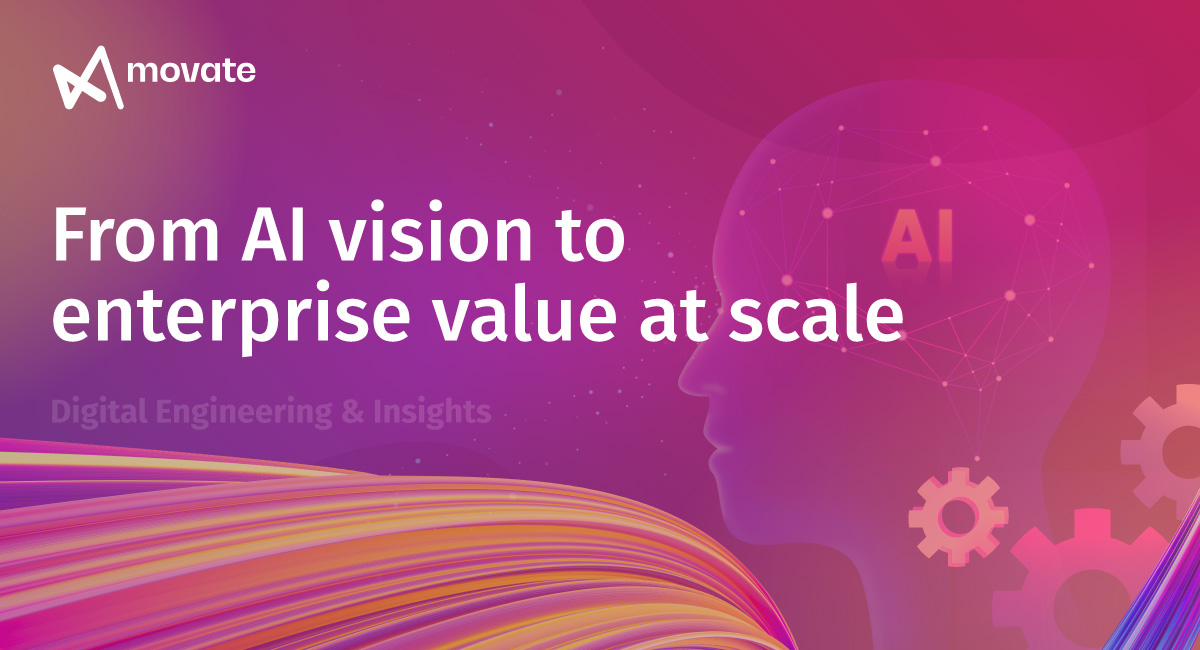
AI has evolved from being a futuristic concept to a strategic enterprise imperative. By 2025, enterprises that institutionalize AI are projected to outperform their peers by threefold in profitability and customer satisfaction. For the C-suite, the challenge lies not just in adopting AI but in embedding it into the very fabric of their organizations to drive measurable value at scale.
This blog explores some of the excerpts from AI Implementation Playbook, offering a roadmap for CXOs to lead with intelligence and compete with confidence.
AI is a strategic imperative for CXOs
AI empowers organizations to accelerate decision-making, optimize ops, elevate CX, and unlock new revenue streams. By 2026, 75% of enterprises are expected to shift from piloting AI to operationalizing it, driving significant process transformation. Companies that hesitate risk being outpaced by AI-driven competitors who deliver faster, smarter, and more personalized value.
Key statistics underline this urgency:
- 80% of ISVs (independent software vendors) will embed generative AI capabilities in their applications by 2026 (Gartner).
- 65% of organizations are already using generative AI in at least one business function (McKinsey).
- 50% of organizations have adopted AI in two or more business functions, nearly doubling from 2023 (McKinsey).
AI is a lever for growth, efficiency, and resilience.
A clear vision, disciplined execution, and continuous optimization are key. Whether you are exploring AI or scaling it enterprise-wide, ensure that every initiative drives measurable value, empowers teams, and enhances customer experiences.
A strategic guide toward AI excellence
Movate AI offers an end-to-end framework to help enterprises seamlessly integrate AI into their core business functions; from defining a clear AI vision to building scalable data infrastructure and ensuring ethical governance, Movate’s playbook empowers CXOs to navigate the complexities of AI adoption with confidence.
Step 1: AI readiness assessment
Before launching enterprise-grade AI initiatives, it’s critical to evaluate the organization’s current posture. Here are 4 aspects that leaders must evaluate readiness: 1.)Data maturity: Assess data quality, availability, and governance. 2.) Technology & infrastructure: Evaluate cloud readiness, scalability, and tools. 3.) Organizational culture & talent: Gauge AI literacy and leadership sponsorship, and 4.) Governance, risk & compliance—examine the policies for ethical AI use.
Step 2: Strategic planning & use case prioritization
AI delivers the most impact when tied directly to enterprise strategy. Movate recommends aligning AI initiatives with core business KPIs such as revenue, customer experience, and operational efficiency. To ensure success:
- Build a use case funnel with ideas from across the organization.
- Score and filter use cases using a feasibility-impact-time-to-value matrix.
- Pilot top-ranked projects using agile execution frameworks.
Step 3: Modernizing data infrastructure
AI thrives on high-quality, scalable data. Movate AI experts recommend moving to a Movate ‘Gold Standard Data Model’ from legacy applications so that data flows seamlessly from raw to enriched, vectorized, and AI-ready.
Essential modernization transitions entail: Transitioning to unified lakehouse architecture from siloed data lakes; shifting to real-time streaming ingestion from batch ETL; ensuring cleansed, enriched, and vectorized feature stores from raw data dumps; from untracked lineage to governed, observable; data catalogs; from reactive management to proactive, ML-driven data orchestration; and a modern AI-ready data stack ensures scalable, compliant, and context-rich data for advanced AI applications.
Learn more about the key phases of the lifecycle.
As AI becomes central to decision-making, enterprises must proactively address risks related to ethics, data privacy, bias, and accountability…
Click here to download the entire playbook as a PDF—Movate’s comprehensive AI Implementation Playbook to access actionable strategies and frameworks for success.
